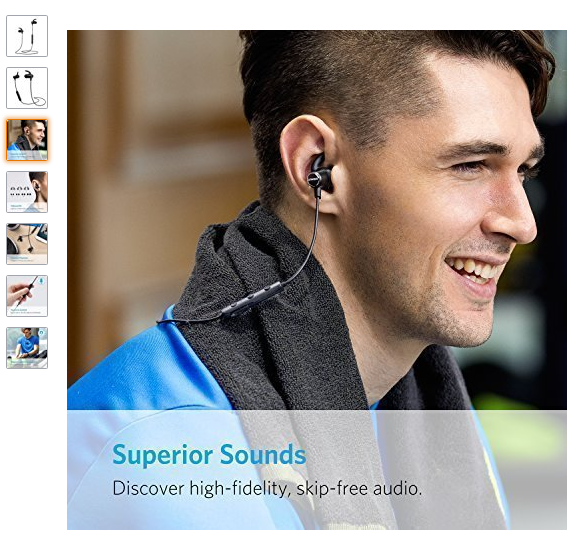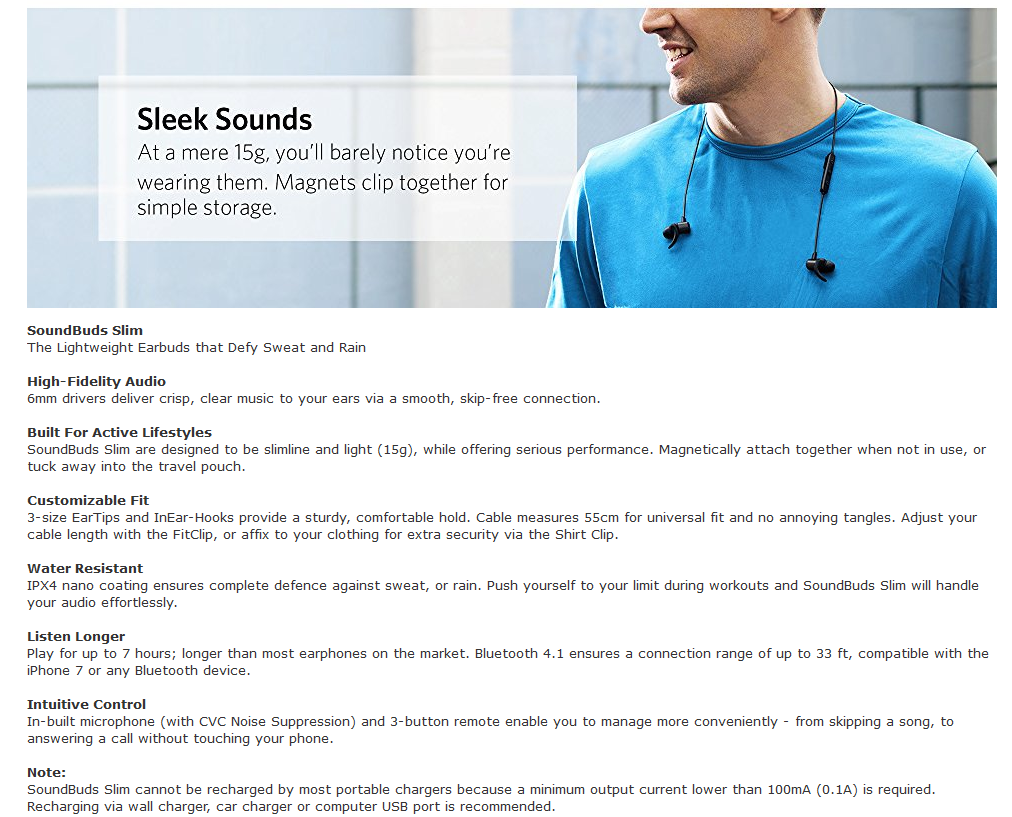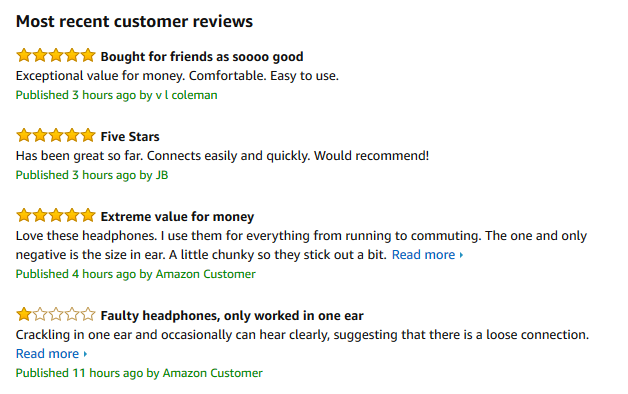For any Amazon seller, creating an optimized product listing is a staple skill. Whether it’s for a private label product, retail arbitrage, or a unique bundle, Amazon products optimization can make all the difference when it comes to boosting sales and improving rankings.
If you’ve shopped on Amazon, you’ve probably encountered less-than-stellar listings. It might be things like titles jammed with irrelevant keywords, confusing images, or vague descriptions.
These issues frustrate buyers and hurt rankings. And it’s this that makes Amazon product listing optimization so important.
Not sure where to start? Don’t worry because this guide focuses on helping you to optimize Amazon listings to help you attract buyers and rank higher in search results.
If you’re an Amazon seller, at some point you’ll need to create an optimized Amazon product listing. This could be for a private label product, a new retail arbitrage product or a unique bundle. Having product listings which are informative and persuasive can help boost your sales and product ranking.
If you make regular purchases on Amazon, you’ve probably come across examples of poor product listings which you can learn from. Typical product listing mistakes include titles spammed with keywords, confusing images and mediocre product descriptions.
In this post, we’ll be looking at Amazon product listing optimization, and exploring the methods and tricks to optimise your Amazon listing and, in turn, rank better on Amazon.
The 8 Parts of Amazon Listing Optimization
Amazon’s product listing can be broken down into eight different components.
- Product title
- Product images
- Key product features
- Product description
- Keywords
- Search terms fields
- Product reviews
- Product rating
Each part contributes to Amazon FBA listing optimization by guiding buyers through the decision-making process.
Let’s explore how to make each section work for you.
1. Product Title
The product title is your first opportunity for Amazon listing keyword optimization. While Amazon allows up to 250 characters, keeping your title under 200 ensures compliance with suppression rules.
Focus on including relevant details like brand, size, and features, and prioritize keywords buyers would naturally search for.
Here’s a good example of a product title for Bluetooth headphones, sold by Anker:

In addition, consider what questions shoppers might be asking about your product. What can you include in the title that would give them enough information to click and read your listing?
Returning to the headphones example, customers might want to know about device compatibility, what type of headphones (slim, over-the-ear, etc.), and what features the headphones have.
If you could only choose one keyphrase to rank for, what would it be?
In our example, Anker has chosen “Bluetooth headphones.” That phrase needs to be in the first 80 characters of the title if at all possible.
Anker has done a great job of crafting their title while balancing the needs of Amazon’s search engine and human site visitors. Notice their primary keyphrase is upfront, with numerous features mentioned (which are also good keywords) and compatible devices included.
When selecting keywords for your title, aim for a balance between high search volume and relevance.
Many sellers make the mistake of adding all search terms with high volume regardless of how relevant those words are to their products — but this approach doesn’t optimize Amazon listings.
In this instance, Anker might have chosen to add keywords such as “headset with microphone.”
While this term does have a high search volume, it isn’t relevant to the product being sold. Headsets typically go over the head and completely cover the ears with padded earpieces. These are not the same as headphones or earphones, which can be either style.
By sending irrelevant traffic to their page, Anker might have experienced a great number of bounces (customers who land on their listing, then leave without buying). Not only is this pointless if no sales are made, but Amazon takes note of such actions and can demote listings in the rankings if too many bounces occur.
Tips:
- Don’t use all caps.
- Capitalise the first letter of each word.
- Use “and” not ampersands (&)
- All numbers should be numerals
- Don’t include price and quantity.
- No promotional messages such as “discount” or “sale”.
- No symbols.
Related: How to Write the Best Amazon Product Titles
2. Product Images
Images have plenty of potential you can harness to optimise Amazon listings.
Amazon will allow you nine product images including a lead image. Include as many high-quality images as you can, sized 1,000 pixels wide and 500 pixels high.
For most products, we’d advise using a white background for the main image. For the other images, show your product from different angles, show the product in use and include a photo of the product packaging. Amazon recommends that the product fills at least 85% of the image.
Your photos should also demonstrate the size and scale of the product you’re selling as a lot of negative feedback can come from buyers not realising the actual size of what you’re selling — “It’s much smaller than I was expecting” is a common complaint from buyers.
Anker includes images of the product, including images of the product in use.

Overall, you should definitely include more than one photo, and be sure to use images with a minimum size of 1000 x 500 pixels that explain your product.
High-quality visuals allow buyers to get a clear sense of what they’re purchasing. As such, they are vital in Amazon products optimization.
3. Key Product Features
Amazon gives you 1,000 characters to describe your key product features…so use it! Make this section work hard for you: Use it to highlight benefits and reinforce Amazon listing keyword optimization by naturally adding relevant phrases.
But as well as that, this is where you can persuade potential customers that your product is better than the competition’s by explaining the uses and benefits of your product.
Put yourself in the customer’s shoes — help them to visualise the experience of using your product and the benefits it brings.
How do you help them experience your product? By helping them conjure images of themselves using what you’re selling.
This might mean giving real-world examples or lifestyle uses, or showing how your product solves their problems.
Amazon bullet point limits vary by category. In most cases, 200 characters per bullet point will give you enough space to highlight features and seamlessly include keyphrases, unless Amazon imposes stricter guidelines.
Right now, Amazon indexes the first 1,000 characters of bullet points. Sticking to 200-character bullets ensures the whole of five bullets will be indexed.
As seen in Anker’s example below, mixing different bullet styles can keep shoppers engaged and drive more conversions.

In that example you can see how Anker uses four different styles of bullets:
- Attention-grabbing: A short phrase to capture the attention of the shopper, and then deliver information.
- Benefit first: Stating a benefit about the product, followed by the feature specs.
- Feature first: Stating a physical feature of the product, followed by a benefit.
- Informational: Listing answers to questions customers ask before they purchase.
Amazon product listing optimization isn’t just for the big screen, so always keep mobile optimization in mind too. On Amazon’s mobile app, bullets display below the A+ descriptions.
Sometimes the bullet list is truncated with only around the first 400 (or so) characters showing before the customers have to click to read more. Sometimes, the bullet list appears in its entirety, which sounds preferable but bear in mind that if your bullets are overly long, you end up with a wall of words that is difficult to read on a smartphone.
Tips:
- Highlight the top five features you want customers to consider.
- Begin each bullet point with a capital letter.
- Be specific with product features and attributes.
- Do not include pricing, shipping or company information (because Amazon prohibits this).
- Use a consistent tone.
4. Product Description
The product description is your opportunity to demonstrate why your product is superior to other similar products. Look at it as a chance to build on the bullet points and reinforce your Amazon FBA listing optimization efforts.
Amazon gives you 2,000 characters to show potential customers what your product is, and what it does. Try to use as many of those characters as you can, and elaborate on any of the features you mentioned in the previous section.
Keep your sentences short and easy to read—particularly for mobile users. This approach supports Amazon products optimization by reducing bounce rates and improving conversions. You can also include any important details about the product or company here.
Don’t over-embellish here as you don’t want to mislead the buyer or create expectations that your product can’t meet.
Here’s how Anker tackles this section:

How to make the most of your product description:
- Expand on your bullet points: If your key feature bullets didn’t leave enough room to dive into the details, use the description to fill in the gaps. Elaborate on specific features and benefits to give shoppers the full picture.
- Highlight additional features and benefits: Got more than five standout features? The product description is the perfect place to showcase them. Don’t let valuable selling points go unnoticed—use this space to highlight extras that might seal the deal.
- Showcase practical uses: Features and benefits are great, but sometimes buyers need help imagining how your product fits into their lives. Paint a picture with real-life examples to help them see the value your product delivers.
- Add credibility to your claims: It’s one thing to call your product amazing—it’s another to back it up with proof. Reference industry recommendations, expert opinions or trends that support your claims to build trust and boost conversions.
You can’t include reviews inside your product description, but you can mention things such as:
- Reports naming your type of product as the best (without calling it “the best”). For instance, “Most teachers recommend 3-ring binder-style notebooks because ______.”
- Celebrities wearing/using your type of product. For aviator sunglasses, you might include “Look just as cool as Tom Cruise in Top Gun.”
Tips:
- Use light HTML to break up paragraphs and accentuate key information.
- Include your keywords that you don’t have in your title or backend keyword section.
- Don’t include your seller name, website URL or company information.
- Avoid promotional language such as “sale” or “free shipping”.
5. Keywords
To optimise Amazon listings, you need to know what keywords you’re targeting, and ranking for.
The misuse of keywords in a product listing is a common Amazon seller mistake. You should only use keywords that are relevant. Keywords can be added to your title and/or your product features.
Amazon listing keyword optimization doesn’t just mean repeating keywords—it’s about placing them where they add value to the buyer’s experience. Also, keywords should be added to your Amazon product listing in the appropriate places, such as the title and your product features.

To find keywords, you need to think like a customer looking for your product. Plus, sometimes you’ll need to think outside of the box, because Amazon also gives you the opportunity to provide backend keywords to enhance product discoverability.
Don’t use the same backend keywords that you use in your title etc. as it is a waste of precious space.
Conducting Amazon keyword research is a bit like running down a rabbit hole. One thing leads to another, and another, and so on.
Instead, ask yourself: What would I look for if I needed this product?
- Product types: What do you call the product? Headphones? Baby blanket? Start with a core word search and see what options are available.
- Features: As you discover additional terms, look for those specific to the features of your product such as wireless, Bluetooth, lightweight, etc.
- Benefits: What is the big pro of wireless headphones? There are no cords to get tangled up. Easy on and easy off. Do you see keywords related to these benefits or others?
- Related terms: Instead of wireless, perhaps search for cordless to see if that term offers a good search volume. Instead of lightweight, how about just light?
Above all else, keep in mind that Amazon listing keyword optimization doesn’t just mean repeating keywords. Place them intentionally, where they add value to the buyer’s experience.
6. Search Terms Fields
Once you’ve identified your top keywords, prioritise adding them to your title and bullet points for Amazon listing keyword optimization. Any remaining keywords can be added to the backend Search Terms fields to support Amazon products optimization efforts.
The Search Terms field has a limit of 250 bytes, so make sure to use this space efficiently. Keep in mind that a byte equals one character for letters and numbers but counts as two characters for symbols or special characters.
Exceeding the 250-byte limit will cause Amazon to ignore all the keywords in that field, so staying within the limit is essential for Amazon FBA listing optimization.
You can also use additional fields—like Intended Use, Target Audience, and Subject Matter—to include less-critical keywords. These fields allow you to target specific audiences and uses for your product.
For example, the Target Audience field could include terms like “hair color for men” or “children’s cough medicine”, helping you optimise Amazon product listing optimization across various search queries.
The Intended Use field might focus on scenarios where your product is useful, such as “hammock for camping” or “runner’s sneakers.”
Meanwhile, the Subject Matter field is broader and should include keywords related to your product category, like “sports,” “fashion” or “eye protection” for sunglasses.
To boost visibility and optimise Amazon listings, prioritise filling out the Subject Matter fields first. The other fields may or may not directly impact rankings, but they’re worth using for added relevance and Amazon products optimization.
7. Product Reviews
Product reviews are very important on Amazon. Along with strong ratings they can complement Amazon product listing optimization efforts by reassuring potential buyers that your product delivers as promised.
Ratings provide social proof that your product is of a high standard. However, getting product reviews isn’t easy, especially for new sellers/new products.
Using automated feedback services like FeedbackExpress can take the hassle out of requesting product reviews.
You can get ahead of your competitors by using templates proven to result in higher levels of engagement from buyers.

Some sellers will also run campaigns and promotions in order to get more product reviews.
Providing a high-quality product that you described accurately is the best way to gain 4 or 5-star reviews. If you do receive any negative or neutral reviews, check they are within Amazon’s guidelines.
For example, if a buyer leaves seller feedback as a product review, you can ask Amazon to remove it.

Related: 21 Ways to Rank Your Products Higher on Amazon
8. Competitive Pricing
The secret sauce of Amazon product listing optimization? Making sure your items are competitively priced, of course! It’s what makes all your other efforts worthwhile.
Pricing plays a huge role in Amazon FBA listing optimization. Even the most polished listing won’t convert without competitive pricing.
Tools like RepricerExpress help sellers stay competitive without constant monitoring. Whether you’re pricing against the competition or aiming to win the Buy Box, optimising Amazon listing strategies work best when paired with dynamic repricing tools.
With competition more intense than ever and lots of sellers selling the same products, price is key.
RepricerExpress can help you keep your listings competitively priced 24/7 and help you win more Buy Boxes. Try it now—free for 14 days.






